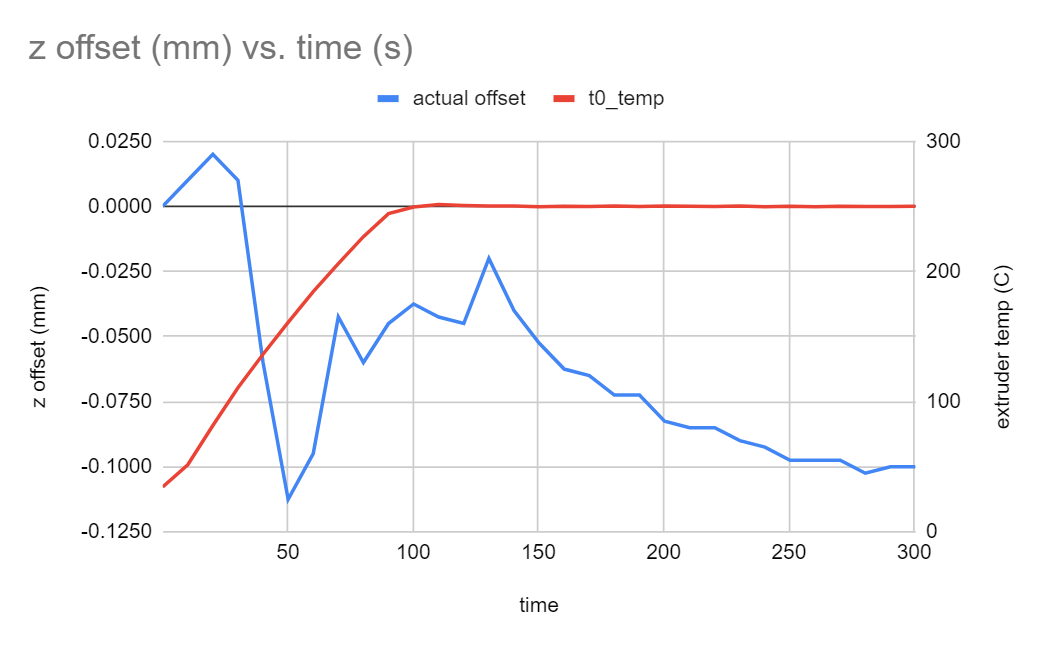Note: due to recent events, various technical shortcomings with Voron printers, and inappropriate and irrational actions taken by the Voron team against a substantial number of dissenting community members expressing their right to free speech, including myself, I no longer recommend building printers of their design. I will be publishing a detailed article explaining why in the near future, which I will link to here. However, this plugin does work on any printer running Klipper.
This plugin provides a new G-code command, STABLE_Z_HOME, which homes Z
repeatedly until the Z offset stabilizes. This is useful if you have a
printer which homes by pushing the nozzle against the Z endstop,
where any plastic on or oozing from the nozzle can affect the Z offset
and hence cause variation in the height of your first layer.
The plugin can optionally run a G-code script before each probe, allowing you
to clean the nozzle immediately before the offset is measured.
This plugin is developed in my spare time. If you like it, please consider supporting further development and updates by making a donation.
To illustrate the problem this plugin is designed to solve, here is an experiment run on a Voron V2.4, with the nozzle pushed against a pin connected to a microswitch used as the Z endstop. I measured the probed Z offset every 10 seconds, starting with the extruder cold, and heating the extruder to the printing temperature for ABS (250C here). The nozzle was not scrubbed or cleaned in any way before or during this run, for demonstration purposes.
You can see that the Z offset varies by as much as 0.15mm during the run. As the plastic on the nozzle melts and gets squashed, the nozzle appears to move 0.15mm closer to the bed. Then, the filament in the nozzle oozes, pushing the nozzle up by 0.10mm over the next minute. Finally, as the oozing subsides, the offset settles at around -0.10mm.
Clone the repo into the home directory of your Pi, then symlink stable_z_home.py
into your Klipper installation, like this:
$ cd ~/klipper/klippy/extras
$ ln -s ~/Klipper-Stable-Z-Home/stable_z_home.py .
Add the following to your Klipper config file, adjusting the G-code, which will be run before each probe attempt, to your needs:
[stable_z_home]
gcode:
# use nozzle brush to clean nozzle; requires PURGE parameter, see below
CLEAN_NOZZLE PURGE=0
You can then add STABLE_Z_HOME to your PRINT_START macro, to replace the
final G28 Z you may have there. A good time to do this is between heating
the extruder and your final purge, e.g.:
[gcode_macro PRINT_START]
gcode:
# ...
M104 S{EXTRUDER}
M109 S{EXTRUDER}
STABLE_Z_HOME # instead of G28 Z
CLEAN_NOZZLE PURGE=1
# ...
Note that to use the CLEAN_NOZZLE macro, which is from edwardyeeks' excellent
purge bucket and nozzle scrub macros which can be found
here,
you need to extend the macro with a PURGE argument which allows you to scrub
the nozzle without purging. Skipping the purge before each probe attempt saves
time and minimizes oozing. The macro is easily extended like this:
[gcode_macro clean_nozzle]
# Add a parameter at the top, with default value 1 (purge).
default_parameter_PURGE: 1
# ...
gcode:
# ...
# Replace the "if" condition around the purge section in the macro as follows.
## Check if user enabled purge option or not.
{% if params.PURGE|int == 1 %}
# ... perform the purge ...
{% endif %}
# ...
The following parameters can be adjusted in the [stable_z_home] section:
[stable_z_home]
#gcode:
# The G-code to run before each probe attempt. The default is none.
#retries:
# The maximum number of probe attempts allowed. The default is 20.
#window:
# The number of samples to use in the tolerance window. The default is 4.
#retry_tolerance:
# The maximum range between the min and max values of the Z offset in the window
# to consider the offset stable and complete the procedure. The default is
# 0.0025mm.
The parameters RETRIES, RETRY_TOLERANCE, and WINDOW, can also be passed
to the STABLE_Z_HOME command, in which case they override the defaults set
in the config section above.
Copyright (C) 2021 Matthew Lloyd

